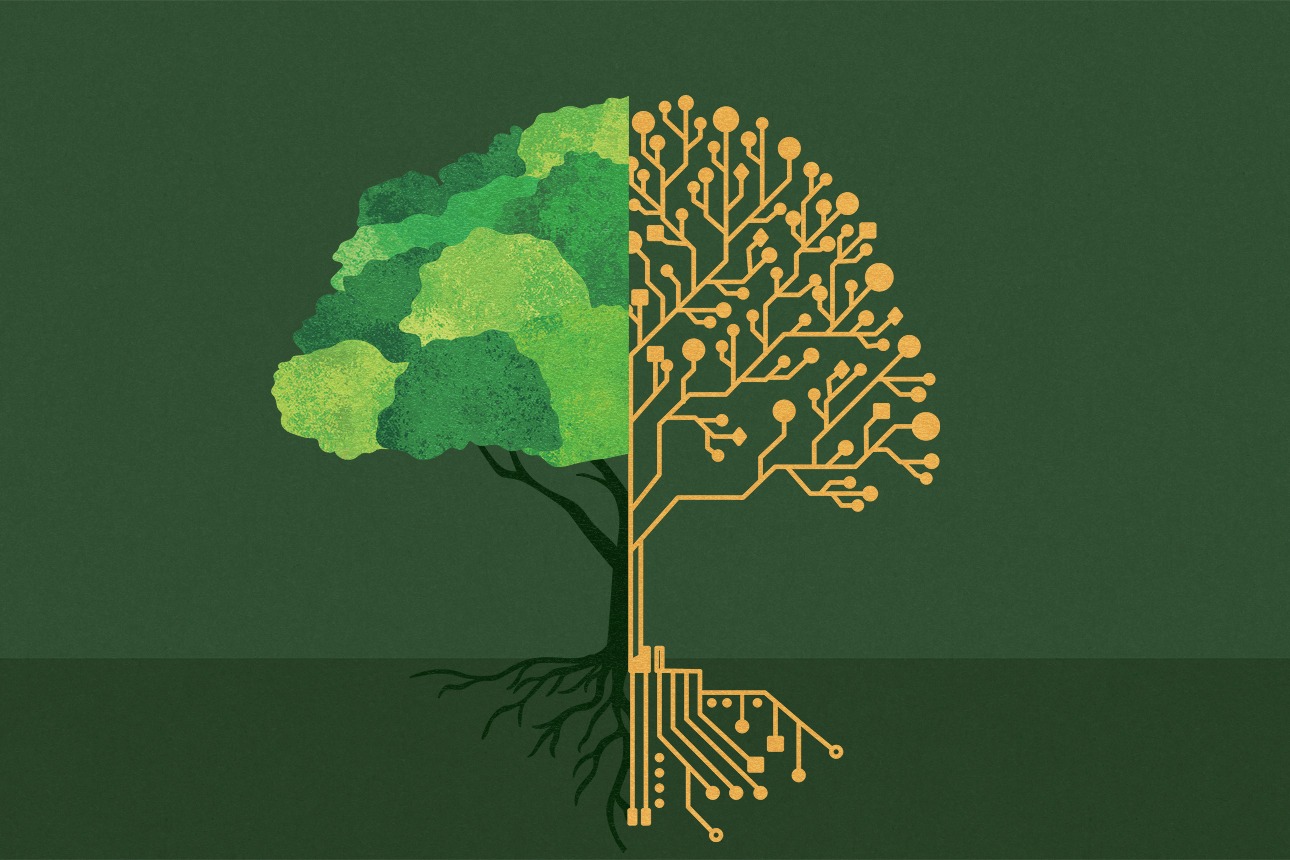
The Decentralized Web (Web 3.0): A User’s Guide.
"Explore the transformative world of Web 3.0, the decentralized internet that empowers users with control over their data, digital assets, and online identities. Discover how blockchain, decentralized applications, peer-to-peer networks, and tokenized economies are reshaping social media, finance, gaming, and digital creativity, creating a secure, transparent, and user-driven internet for the future."
✨ Raghav Jain

Introduction
The internet as we know it today—often referred to as Web 2.0—is centralized. Tech giants like Google, Facebook, Amazon, and Microsoft dominate most online services, from social media and search engines to cloud storage and online marketplaces. While this centralization has enabled rapid innovation, scalability, and convenience, it has also introduced significant challenges, including privacy concerns, data breaches, censorship, and monopolistic practices.
Enter Web 3.0, or the decentralized web—a paradigm shift promising a more user-centric, secure, and open internet. Web 3.0 envisions a web where individuals control their own data, digital assets, and online identities without relying on centralized intermediaries. Powered by blockchain, peer-to-peer networks, and decentralized protocols, Web 3.0 seeks to reshape how we interact, transact, and collaborate online.
This guide provides a detailed exploration of the decentralized web, its technologies, practical use cases, and what it means for users, developers, and businesses.
Understanding the Decentralized Web
What Is Web 3.0?
Web 3.0 is the next evolution of the internet, built around the principle of decentralization. Unlike Web 2.0, where data and services are controlled by centralized corporations, Web 3.0 relies on distributed networks where users retain ownership of their information and digital assets.
Key characteristics of Web 3.0 include:
- Decentralization: No single entity has control over the network; governance and data are distributed across nodes.
- Trustless Systems: Transactions and interactions are verified through protocols rather than relying on a trusted third party.
- User Ownership: Individuals own their data, identity, and digital assets.
- Interoperability: Applications can interact seamlessly across different platforms and blockchains.
- Token-based Economics: Digital tokens incentivize participation, content creation, and network security.
The Evolution from Web 1.0 to Web 3.0
- Web 1.0 (Static Web): In the 1990s, websites were mostly static pages with read-only content. Users consumed information but had minimal interaction or content creation capabilities.
- Web 2.0 (Interactive Web): From the 2000s onward, platforms like Facebook, YouTube, and Twitter transformed the web into a participatory space. Users could create, share, and interact with content. However, centralized control and data monetization became predominant.
- Web 3.0 (Decentralized Web): The vision of Web 3.0 integrates blockchain, smart contracts, and decentralized networks to return control to users, offering privacy, security, and true ownership of digital assets.
Core Technologies Behind Web 3.0
1. Blockchain
Blockchain is the backbone of Web 3.0. It is a distributed ledger that records transactions across a network of computers, ensuring transparency and immutability. In Web 3.0:
- Blockchains enable peer-to-peer transactions without intermediaries.
- Smart contracts automate processes and enforce rules programmatically.
- Popular blockchains like Ethereum, Solana, and Polkadot host decentralized applications (dApps).
2. Decentralized Applications (dApps)
Unlike traditional apps hosted on centralized servers, dApps run on decentralized networks. Key features include:
- Open-source code accessible to everyone.
- Operations executed on a blockchain, making them tamper-proof.
- Incentives for users through native tokens or cryptocurrency.
Examples: Uniswap (decentralized exchange), OpenSea (NFT marketplace), and Brave Browser (privacy-focused web browser).
3. Peer-to-Peer (P2P) Networks
P2P networks enable direct interaction between users without intermediaries. Technologies like IPFS (InterPlanetary File System) allow decentralized file storage, reducing dependency on cloud providers.
4. Digital Identity and Self-Sovereign Identity (SSI)
Web 3.0 empowers users to control their digital identity using SSI frameworks. Instead of logging in with Google or Facebook, individuals can use blockchain-based credentials to authenticate securely without compromising personal data.
5. Tokenization and Cryptoeconomics
Digital tokens in Web 3.0 represent value, ownership, or access rights. Token-based incentives:
- Reward users for contributing resources, content, or security.
- Enable decentralized governance through voting mechanisms.
- Facilitate new economic models like NFTs (Non-Fungible Tokens) and DAOs (Decentralized Autonomous Organizations).
How Web 3.0 Benefits Users
1. Enhanced Privacy and Security
In Web 2.0, personal data is often monetized and stored in centralized servers vulnerable to hacking. Web 3.0 provides:
- Encrypted data storage.
- Control over which entities can access your information.
- Reduced risk of large-scale data breaches.
2. Ownership of Digital Assets
Users in Web 3.0 truly own their assets:
- NFTs allow ownership of digital art, music, virtual real estate, and more.
- Cryptocurrencies enable peer-to-peer financial transactions without banks.
- Tokens provide stake in platforms and governance rights.
3. Resistance to Censorship
Decentralized platforms cannot be easily controlled or shut down by governments or corporations, promoting freedom of speech and innovation.
4. Interoperability and Open Ecosystems
Web 3.0 supports cross-platform compatibility. For example:
- A wallet can store tokens and NFTs usable across multiple dApps.
- Blockchain-based identity can be recognized across various services without repeated verification.
Use Cases of Web 3.0
1. Finance (DeFi)
Decentralized finance (DeFi) applications allow lending, borrowing, trading, and yield farming without banks. Examples include:
- Compound: Earn interest on crypto holdings.
- Aave: Borrow and lend without intermediaries.
2. Digital Art and NFTs
Artists can tokenize their work and sell it directly to collectors, receiving royalties automatically through smart contracts.
3. Social Media and Content Platforms
Decentralized platforms like Mastodon and Lens Protocol give users control over content, moderation, and monetization.
4. Gaming and Virtual Worlds (Metaverse)
Web 3.0 enables virtual economies in gaming platforms where users can buy, sell, or trade in-game assets as NFTs, creating real-world value.
5. Supply Chain and Provenance
Blockchain ensures transparent tracking of goods, verifying authenticity, origin, and environmental impact in industries like fashion, food, and pharmaceuticals.
Challenges and Limitations of Web 3.0
Despite its promise, Web 3.0 faces several hurdles:
1. Complexity and Usability
- Current dApps and wallets can be complicated for average users.
- Private key management is critical; loss of keys can result in permanent asset loss.
2. Scalability
- Popular blockchains like Ethereum face high transaction fees and slow speeds.
- Layer 2 solutions and alternative blockchains are emerging but not yet mainstream.
3. Regulatory Uncertainty
- Cryptocurrencies and decentralized platforms operate in a grey legal zone.
- Governments are still exploring taxation, anti-money laundering, and consumer protection frameworks.
4. Energy Consumption
- Proof-of-Work blockchains are energy-intensive.
- Transition to Proof-of-Stake and other consensus mechanisms is helping, but environmental concerns persist.
5. Security Risks
- Smart contract bugs, rug pulls, and phishing attacks are prevalent.
- Security audits and user education are critical for safer adoption.
How to Get Started as a Web 3.0 User
- Get a Digital Wallet: Tools like MetaMask or Trust Wallet allow you to store cryptocurrency and interact with dApps.
- Acquire Cryptocurrency: Purchase Ethereum, Solana, or other blockchain tokens to participate in Web 3.0 services.
- Explore dApps: Start with decentralized exchanges, NFT marketplaces, and DeFi platforms.
- Secure Your Keys: Use hardware wallets and backups to protect your private keys.
- Participate in Governance: Many platforms allow token holders to vote on changes, giving users real influence.
Future Outlook of Web 3.0
Web 3.0 promises a user-first, decentralized, and secure digital ecosystem, but its mass adoption will require:
- Simpler user interfaces and onboarding processes.
- Scalable blockchains and faster consensus mechanisms.
- Clear regulatory frameworks.
- Integration with real-world industries and services.
Experts predict that by the late 2020s, Web 3.0 technologies could significantly reshape social media, finance, commerce, and the internet economy, giving users unprecedented autonomy and economic opportunities.
The decentralized web, commonly referred to as Web 3.0, represents the next evolutionary leap of the internet, promising to fundamentally alter the way users interact with digital platforms, manage their data, and participate in online economies, a paradigm shift driven primarily by blockchain technology, peer-to-peer networking, and cryptographic protocols that ensure transparency, security, and user autonomy, where unlike Web 2.0, which is dominated by centralized corporations such as Google, Amazon, Meta, and Microsoft that control user data, monetize content, and dictate platform policies, Web 3.0 seeks to return control back to the individuals, empowering them to own their digital identities, assets, and interactions, thereby addressing long-standing issues like data privacy violations, censorship, monopolistic practices, and the opaque monetization of personal information, and this transition is fueled by several key technological advancements, first and foremost being blockchain, which functions as a decentralized, tamper-proof ledger recording every transaction and interaction across a distributed network of nodes, making it impossible for a single entity to alter or censor information, while also enabling smart contracts, which are self-executing agreements with the terms encoded in code, automating complex transactions and governance functions without the need for intermediaries, ensuring trustless and reliable operations; alongside blockchain, decentralized applications, or dApps, play a pivotal role in the Web 3.0 ecosystem by providing services that operate on blockchain networks rather than centralized servers, making them resistant to censorship, tampering, and downtime, and enabling features such as decentralized finance (DeFi), where users can lend, borrow, and trade digital assets directly, NFTs (non-fungible tokens) that allow verifiable ownership of digital art, collectibles, and virtual real estate, and social platforms where creators can monetize content without intermediaries taking a disproportionate share of revenue, all of which contribute to a more equitable digital economy; peer-to-peer (P2P) technologies, such as the InterPlanetary File System (IPFS), complement this by enabling users to store and share files across distributed networks rather than relying on centralized cloud providers, reducing the risk of large-scale data breaches and server failures, while also enhancing privacy and control, and self-sovereign identity (SSI) frameworks further empower individuals to manage authentication and credentials without needing to hand over personal information to corporations, allowing users to seamlessly verify identity across services with cryptographic proofs; Web 3.0 also introduces token-based economics, where cryptocurrencies and digital tokens act as incentives, governance tools, and mediums of exchange, enabling users to participate in decision-making processes, fund projects, and earn rewards for contributions to the network, fostering a more participatory and community-driven digital environment, and these tokens can represent not just currency but ownership, access rights, or voting power within decentralized autonomous organizations (DAOs), which are essentially blockchain-governed collectives that operate without centralized management and where decisions are made collectively by token holders, redefining organizational structures and challenging traditional corporate hierarchies; the implications of these innovations are far-reaching: users gain unprecedented control over personal data, can interact with decentralized platforms free from censorship, participate in financial systems without relying on banks or intermediaries, and engage in new digital economies that were previously impossible in Web 2.0, while businesses and developers gain access to open ecosystems where applications can interoperate across chains, users can seamlessly port digital assets, and platforms can operate transparently, fostering trust and innovation; yet, despite the promise, Web 3.0 is not without its challenges, including the steep learning curve for non-technical users, who must navigate complex wallets, private keys, and decentralized interfaces; scalability concerns, as blockchains like Ethereum can become congested, resulting in high fees and slow transaction times; regulatory uncertainty, since many jurisdictions are still grappling with taxation, securities classification, and legal frameworks for decentralized finance and digital assets; security risks, including smart contract vulnerabilities, rug pulls, phishing attacks, and potential exploits in decentralized protocols; and environmental concerns, particularly with proof-of-work blockchains that consume significant energy, though alternatives like proof-of-stake and other consensus mechanisms are mitigating this issue, showing the adaptability and resilience of the ecosystem; for users who wish to engage with Web 3.0, the journey begins with setting up a secure digital wallet, acquiring cryptocurrency to interact with decentralized networks, exploring dApps across finance, gaming, social media, and digital art, understanding the principles of token ownership and governance participation, and learning best practices for key management and security, ensuring that they can fully leverage the decentralized web without falling prey to common pitfalls; ultimately, the decentralized web represents a vision of an internet that is trustless, permissionless, and user-empowered, where data ownership, transparency, privacy, and digital sovereignty are the norms rather than exceptions, and while adoption is gradual and hurdles remain, the ongoing innovation in blockchain scalability, decentralized protocols, NFT ecosystems, DeFi platforms, DAOs, and identity solutions indicates that Web 3.0 is poised to reshape not only how we interact online but also how we organize economies, communities, and governance in the digital age, promising a future where control is redistributed from centralized entities to individual users, digital creativity and innovation are rewarded equitably, and online experiences become truly interoperable, secure, and user-driven, ultimately marking a transformative step in the evolution of the internet from a read-only Web 1.0, to an interactive and centralized Web 2.0, and now to a decentralized, user-owned Web 3.0 that could redefine the digital landscape for decades to come.
The decentralized web, popularly known as Web 3.0, represents a transformative evolution of the internet that fundamentally shifts the power dynamics from centralized corporations to individual users, promising to revolutionize how we manage data, interact online, and participate in digital economies by leveraging blockchain technology, peer-to-peer networks, cryptographic protocols, and tokenized ecosystems, and unlike the current Web 2.0, where tech giants like Google, Facebook, Amazon, and Microsoft dominate data control, monetization, and user engagement, Web 3.0 envisions a world in which individuals have sovereignty over their digital identities, assets, and content, enabling a trustless and transparent environment where transactions, communications, and collaborations occur without the need for intermediaries, thereby mitigating issues such as data breaches, censorship, monopolistic practices, and opaque algorithms that exploit personal information for profit; at the heart of Web 3.0 lies blockchain technology, a decentralized, immutable ledger that records transactions across a distributed network of nodes, providing transparency, security, and resilience against tampering, while smart contracts—self-executing programs coded on the blockchain—automate agreements, financial transactions, and governance processes without reliance on centralized authorities, allowing for applications that are not only secure but also fair and autonomous; complementing this infrastructure are decentralized applications, or dApps, which operate on blockchain networks rather than centralized servers, offering a wide range of services including decentralized finance (DeFi) platforms that allow users to lend, borrow, trade, and earn interest on digital assets without banks, NFT marketplaces where artists and creators can sell digital art, collectibles, and virtual goods with verifiable ownership and royalty mechanisms, decentralized social networks that give users control over content moderation and monetization, and gaming platforms within virtual worlds or the metaverse, where in-game assets are tokenized and can be freely traded, creating real economic value; peer-to-peer (P2P) protocols such as the InterPlanetary File System (IPFS) further strengthen Web 3.0 by enabling file storage and distribution across distributed networks, eliminating reliance on centralized cloud providers, reducing vulnerability to single points of failure, and enhancing privacy, while self-sovereign identity (SSI) systems allow individuals to authenticate across platforms without giving up personal data to corporations, ensuring privacy, security, and control over digital identities, and when combined with token-based economies, where cryptocurrencies, utility tokens, and governance tokens incentivize participation, contributions, and resource sharing, Web 3.0 creates a participatory ecosystem where users are rewarded for engagement, creativity, and network support, fostering a sense of ownership and shared governance that is unprecedented in the history of the internet; beyond these technical innovations, the benefits of Web 3.0 for users are profound, including enhanced data privacy, ownership of digital assets, resistance to censorship, financial inclusion through decentralized finance, cross-platform interoperability, and the ability to participate in community-driven governance, while for developers and entrepreneurs, it opens opportunities for creating transparent, resilient applications, new monetization models, and ecosystems that encourage collaboration rather than gatekeeping; however, Web 3.0 also faces significant challenges that may slow adoption, such as the steep learning curve for mainstream users who must understand wallets, private keys, and decentralized interfaces, scalability issues that result in high transaction fees and network congestion on popular blockchains, regulatory uncertainty as governments struggle to define legal frameworks for cryptocurrencies, digital assets, and decentralized organizations, security risks including smart contract vulnerabilities, phishing attacks, and exploits in DeFi platforms, and environmental concerns associated with proof-of-work blockchains, although transitions to proof-of-stake and more energy-efficient consensus mechanisms are mitigating some of these issues, and despite these hurdles, adoption continues to grow as platforms innovate, layer-2 scaling solutions emerge, wallets become more user-friendly, and educational initiatives demystify the decentralized web for everyday users; to participate in Web 3.0, users begin by setting up secure digital wallets such as MetaMask or Trust Wallet, acquiring cryptocurrencies to engage in transactions, exploring dApps across finance, social media, gaming, and digital art, understanding tokenomics and the rights and privileges tokens confer, participating in decentralized autonomous organizations (DAOs) for governance, and practicing best security practices to protect private keys and digital assets, all of which empower them to navigate a decentralized ecosystem with confidence and autonomy, while developers must focus on creating intuitive, scalable, and secure applications that lower barriers to entry for mass adoption, ensuring that the decentralized web grows inclusively; looking ahead, Web 3.0 is poised to redefine not only online interactions but also digital economies, organizational structures, social engagement, and creative industries, by creating an environment where users are stakeholders rather than mere consumers, data is decentralized and under user control, platforms operate transparently, and digital innovation is incentivized and rewarded equitably, and although Web 3.0 is unlikely to replace Web 2.0 entirely in the near future, it will coexist and gradually transform the landscape of social media, finance, commerce, entertainment, governance, and more, ultimately creating an internet that is open, user-centric, trustless, and permissionless, where individuals can freely participate, transact, and innovate, and this transformation represents not merely a technological upgrade but a philosophical shift in how the internet functions, moving away from centralized control and towards empowerment, fairness, transparency, and autonomy, promising a digital world where the power is in the hands of users, creators, and communities, a web that truly aligns with the foundational vision of an open, free, and participatory internet, and where the potential for innovation, collaboration, and economic opportunity is limitless, marking a profound milestone in the evolution of digital society that will impact every facet of our online lives for decades to come.
Conclusion
The decentralized web, or Web 3.0, is more than a technological upgrade; it represents a fundamental shift in how we interact with digital services. By giving individuals control over data, assets, and identity, Web 3.0 reduces reliance on central authorities, enhances privacy, and fosters new economic models. While challenges like scalability, usability, regulation, and security remain, the ongoing evolution of blockchain, dApps, and token economies is paving the way for a more equitable and innovative internet.
As adoption grows, users will increasingly experience an internet that is transparent, secure, and empowering, where participation in digital life is not dictated by corporations but by individuals themselves.
Q&A Section
Q1 :- What is the main difference between Web 2.0 and Web 3.0?
Ans:- Web 2.0 is centralized, where companies control data and services, while Web 3.0 is decentralized, giving users ownership, privacy, and control over their digital assets.
Q2 :- What technologies power Web 3.0?
Ans:- Web 3.0 is powered by blockchain, decentralized applications (dApps), peer-to-peer networks, digital identity frameworks, and token-based economies.
Q3 :- How do users benefit from Web 3.0?
Ans:- Users benefit through enhanced privacy, ownership of digital assets, resistance to censorship, and interoperable open ecosystems.
Q4 :- What are some popular use cases of Web 3.0?
Ans:- Popular use cases include DeFi (decentralized finance), NFTs and digital art, decentralized social media, gaming/metaverse, and blockchain-based supply chain tracking.
Q5 :- What are the challenges facing Web 3.0 adoption?
Ans:- Challenges include complexity and usability issues, scalability, regulatory uncertainty, energy consumption, and security risks.
Similar Articles
Find more relatable content in similar Articles

The Hidden Energy Cost of Stre..
As digital streaming and onlin.. Read More

Wearable Tech 3.0: From Smartw..
“Exploring Wearable Tech 3.0: .. Read More

The Decentralized Web (Web 3.0..
"Explore the transformative wo.. Read More

The Rise of Digital Twins: You..
Digital twins are transforming.. Read More
Explore Other Categories
Explore many different categories of articles ranging from Gadgets to Security
Smart Devices, Gear & Innovations
Discover in-depth reviews, hands-on experiences, and expert insights on the newest gadgets—from smartphones to smartwatches, headphones, wearables, and everything in between. Stay ahead with the latest in tech gear
Apps That Power Your World
Explore essential mobile and desktop applications across all platforms. From productivity boosters to creative tools, we cover updates, recommendations, and how-tos to make your digital life easier and more efficient.
Tomorrow's Technology, Today's Insights
Dive into the world of emerging technologies, AI breakthroughs, space tech, robotics, and innovations shaping the future. Stay informed on what's next in the evolution of science and technology.
Protecting You in a Digital Age
Learn how to secure your data, protect your privacy, and understand the latest in online threats. We break down complex cybersecurity topics into practical advice for everyday users and professionals alike.
© 2025 Copyrights by rTechnology. All Rights Reserved.